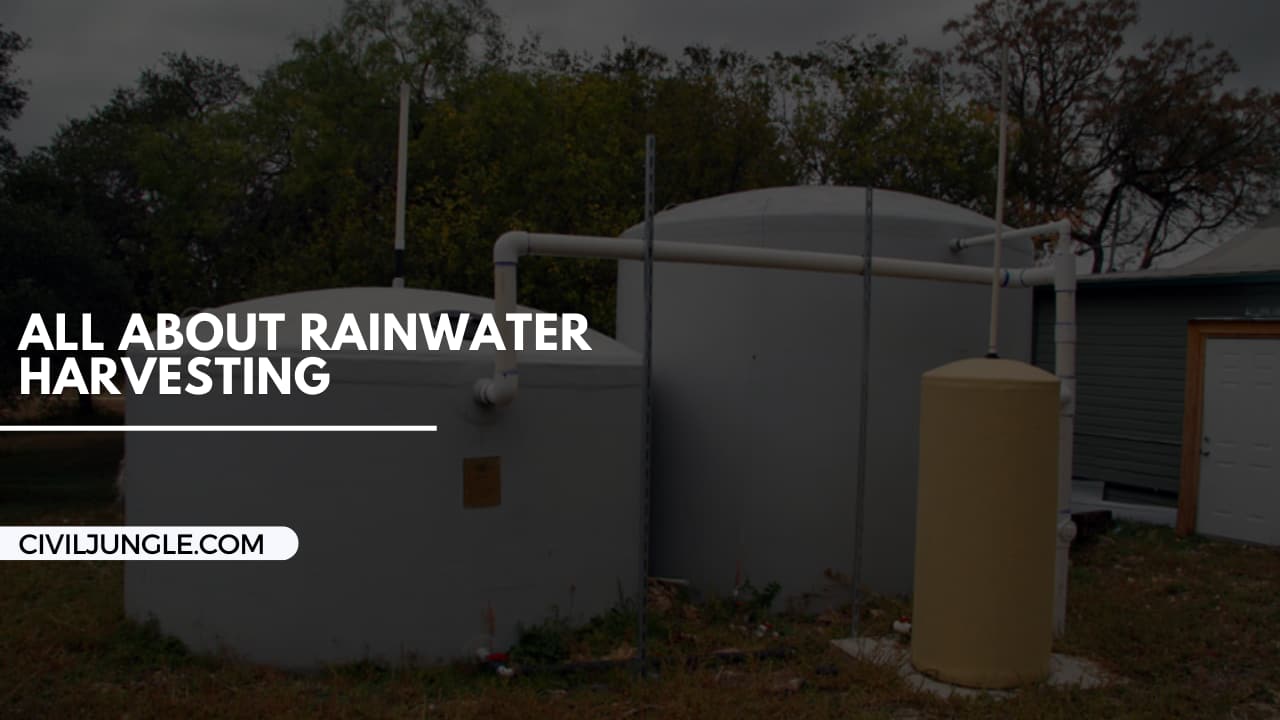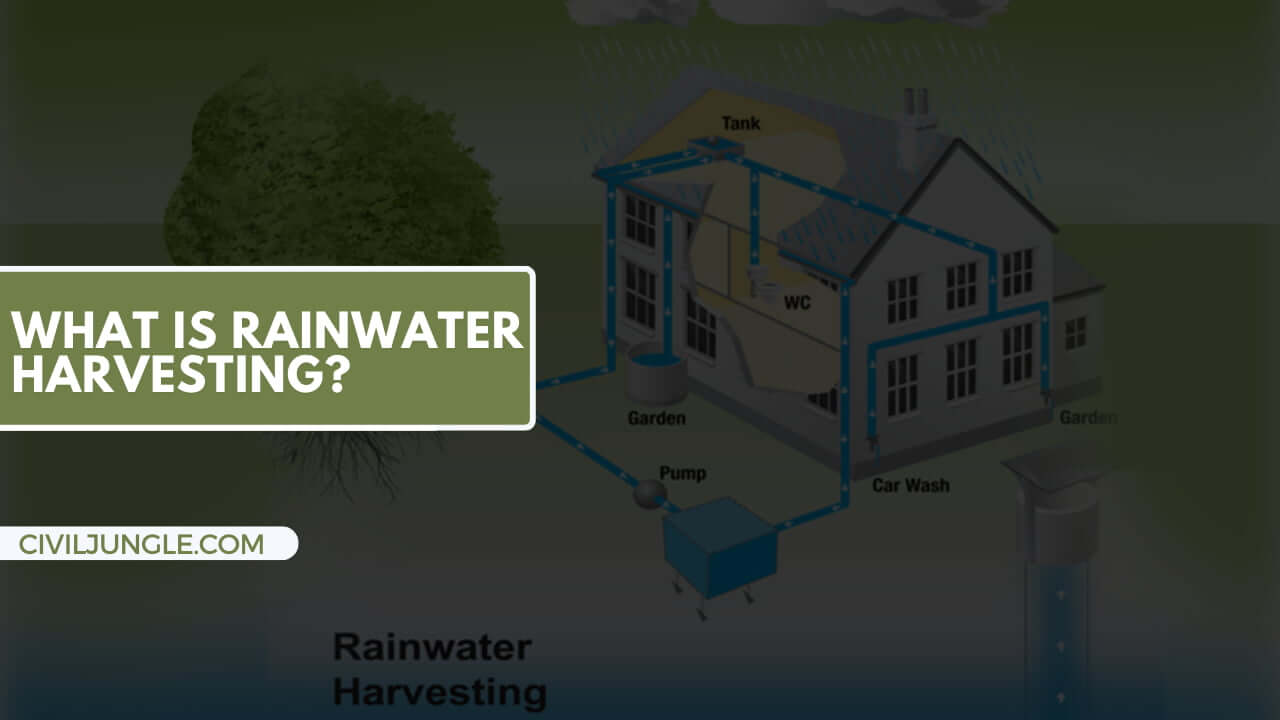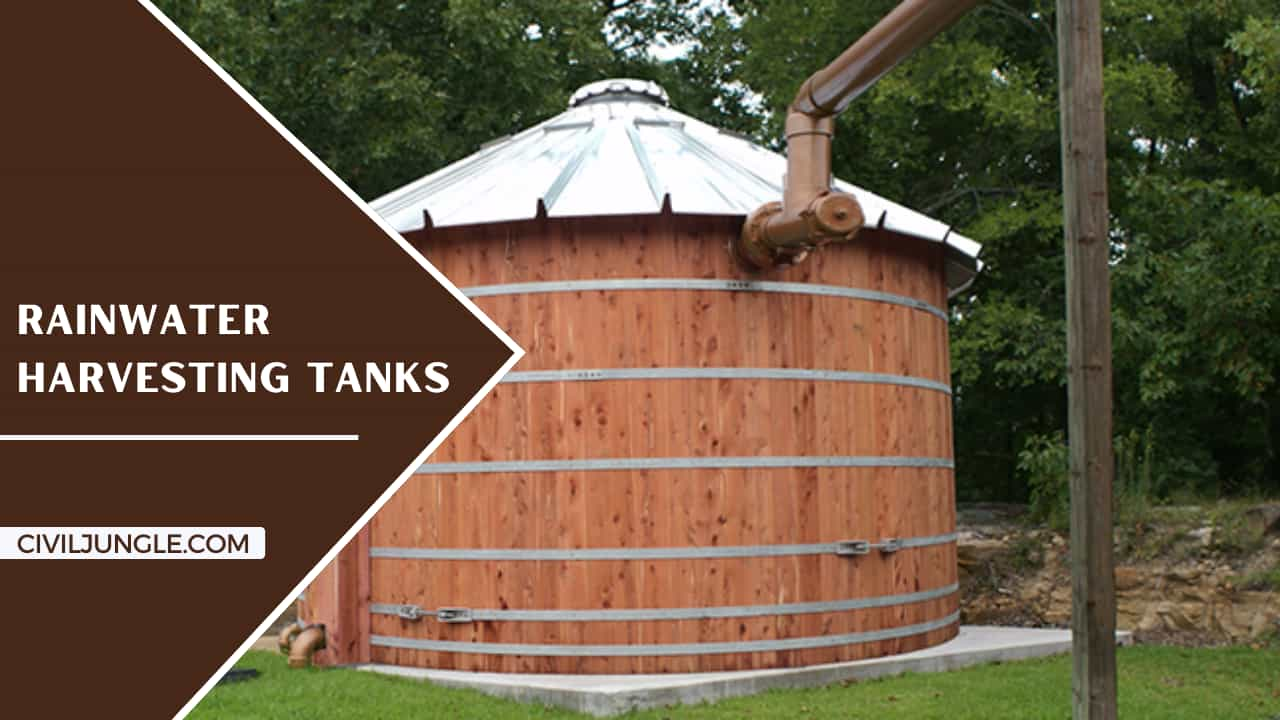
Rainwater Harvesting
The purest form of water is none other than rain. The phenomenon of rainfall is a blessing from the almighty God. In the past, people used to rely on rain from various perspectives, but in the modern period, people invented various technologies that reduced the dependency of humans on rain.
Humans invented various methods to wrench the groundwater out and use that for good. But the groundwater level is decreasing gradually day by day.
In many big towns, the level of groundwater has become zero, and water has become scarce in such places. This problem is going to increase even more in the future and an excellent solution to get rid of this problem is to harvest rainwater.
Rainwater is a pure source of drinking water. But this rainwater is either absorbed by the soil or wasted by getting mixed with water sources that are not drinkable. From any impervious surface or any structure running off, rainwater is collected and used in many ways.
This is known as rainwater harvesting. Rainwater harvesting can be done anywhere at any time in various ways during the monsoon. But in rainwater harvesting, the most popular and easy way is to collect the rainwater from the roof.
What Is Rainwater Harvesting?

The process in which rainwater is collected and stored is called rainwater harvesting. Rainwater is a general source of pure water. Rather than letting the rainwater be wasted, the water can be stored for use. There are various methods for collecting rainwater and storing it.
Mainly the rainwater is collected from the roof and channelized to a place where the water can be stored. These storage vessels can be very huge for collecting a large amount of water.
In the down spots, the water collecting vessel is placed. Gutters or drains are attached to the vessel. These gutters channel the water into the vessel.
The system of rainwater harvesting can be so huge that it can support the household demand of your entire family, but it also can be so little, like collecting the rainwater into a rain barrel.
Purpose of Rainwater Harvesting
Here, the list of purpose rainwater harvesting are as follows.
- The main purpose of rainwater harvesting is to lessen the dependency on groundwater. The groundwater level is decreasing day by day. So reducing the dependency on groundwater for household work is a need of the hour.
- There are many other reasons for harvesting rainwater. Rainwater can be used in many ways. Every day, many people all over the world use wastewater. People do not even know how they waste water daily. People use drinking water to flush the toilet, which is a ridiculous idea. Not only for flushing but also for bathing, washing clothes, washing utensils, etc. People use well-refined drinking water. While in many places in the world, people suffer from the lack of water, also people tend to waste drinking water without realizing the need for water saving. These works can be done easily using rainwater if rainwater is collected and harvested.
- To lessen the global environmental footprint and turn your home green, rainwater collection is a brilliant technique. Rainwater can be used in watering the garden and lawn. The watering system can be connected to the rainwater collecting vessel. It will help the sprinkler or irrigation system.
- Rainwater can be used in washing cars and cleaning the house’s exteriors. Washing pets can be done with rainwater. There are many other uses of rainwater as well, such as refilling the fish pond and fountains, refilling the swimming pool, washing the sidewalks and driveway, using it for washing clothes and toilet flush, etc.
Methods of Rainwater Harvesting
Here, the three different methods of rainwater harvesting are as follows.
- Rain Barrels:
- Dry System:
- Wet System:
Let us see in detail the various methods of rainwater harvesting that we follows.
1. Rain Barrels:
Rainwater harvesting can be started with a barrel. Collecting rainwater in barrels is one of the most common methods of harvesting rainwater. People are familiar with this process.
Place a barrel large enough to hold a good amount of water at the downspout of the gutter. The barrel can be recycled, but new barrels can be used as well. Anyone can install a rain barrel at home. It is so easy that even a kid can do it. Barrels are easily available. Anywhere anyone can find a barrel.
Barrels do not take up so much space, so they can be fit anywhere easily. The capacity of barrels is near about 50 gallons to 100 gallons. One con of barrels is that they do not hold much water, so they soon get overflow. So if a barrel is filled, then that must be replaced with another empty barrel.
2. Dry System:
Collecting rainwater in a dry system is so similar to collecting rainwater in a rain barrel. The dry method is just another variety of setups for a rain barrel.
The difference is size. The size of the dry system is very big compared to the system of rain barrels, and the capacity of holding water is much more than that of a rain barrel.
The volume of the storage is large. After each rain event, the collection pipe dries because it empties straightly into the top of the tank. The dry system has a larger capacity than a barrel, so it can store more water.
In places where rainfall is uncertain and happens infrequently, building a dry system is perfect. The storage tank should be built near the house to store the water properly and use the water.
3. Wet System:
The wet system is a different method from both rain barrels and dry systems. This system encompasses placing the collection pipes underground. Placing the collection pipes underground helps to connect various downspouts from various gutters.
The underground piping will be filled with rainwater during rains. The water level in the pipes will rise with increasing amounts of water in it.
Then the water will spill into the tank. The connections in the underground collection piping and the downspouts must be water-tight. The elevation of the tank should not be more than the gutters.
This method allows one to collect water from the entire collection surface. This method also allows water to be collected from multiple gutters and downspouts.
A special quality of this method is that the storage tanks can be placed away from home. The wet system is more expensive than other systems because of the underground piping.
Different Types of Filters Used in Rainwater Harvesting
Here the list of different types of filertd used in rainwater harvesting are as follows.
- Mechanical Pre-Tank Filters:
- Microscopic Filtration:
- Disinfection:
- Carbon Filters:
Let us see in detail the various methods of rainwater harvesting that we follow.
1. Mechanical Pre-Tank Filters:
To prevent entering dust and dirt into the water harvesting system, many types of filters are used all over the world. One such filter is a mechanical pre-tank filter.
A pre or in-tank filter is used in this process to keep the water refined. These pre-tank filters are made of stainless steel and covered by plastic.
The stainless steel element is a grill or mesh. The quality of these filters is measured in microns. The quality is inversely proportional to the number of microns.
The more the micron, the less efficient the filter will be. An in-tank or pre-tank filter requires regular cleaning. The water after can be used in such works as washing clothes or flushing the toilet etc.
2. Microscopic Filtration:
One can achieve a much finer degree of filtration. Microscopic filters come with a sealed housing comprising a bag or a cartridge.
The bags or cartridges need to be changed periodically because they get clogged up. Microscopic filters require a good amount of pressure to run. The water is run by being forced through. So microscopic filters are only used in pumps.
3. Disinfection:
Disinfection filters remove germs like bacteria and fungi from water. Mechanical filters filter the water to a microscopic level, but they do not kill the germs which can be harmful to our health.
So water filtered from mechanical filters cannot be drunk. But if the disinfection process is applied, then the rainwater can be drunk without worrying.
There are many ways to disinfect. Some of these processes are Reverse Osmosis( RO), chemical dosing, UltraViolet Light, etc. The Reverse Osmosis process is expensive, and a lot of water is wasted in this process.
In chemical dosing, some chemicals like chlorine are used. In ultraviolet disinfection, water is passed through a tube where the water is exposed to UV light of a particular wavelength. This UV ray kills all the germs and bacteria in the water very easily.
4. Carbon Filters:
Carbon filtration is needed to drink the rainwater. Carbon is good in removing volatile chemical substances like chlorine. Passing the rainwater through carbon, the taste and odor of water improve significantly. To the rainwater system, a granular activated carbon module should be attached.
Rainwater Harvesting Texas
Harvesting rainwater is legal in the state of Texas. The Texas Commission on Environmental Quality said that no permission is needed for harvesting rainwater.
This can meet most of the household water needs. The government of Texas encourages people to collect rainwater. They have a website where directions and benefits of harvesting rainwater are given.
5 Different Types of Rainwater Harvesting Tanks

Here, the different types of rainwater harvesting are as follows.
1. Rainwater Harvesting Tank of Concrete:
Concrete tanks are heavy, and the weight of the water inside the tank makes the tank even heavier, so these types of tanks are installed underground. Installing concrete tanks underground is a bit expensive and takes more labor than installing other tanks.
It is advised not to drink the water stored in concrete tanks. The lime from the concrete can mix with water, so it is good to avoid drinking the water.
2. Metal Tanks for Rainwater Harvesting:
Metal tanks are the exact opposite of concrete tanks. Metal tanks are cheaper and lighter, and installing metal tanks is easier than any other type of tank. The water from this tank can be used for gardening, car washing, and various other purposes.
Nevertheless, do not drink the water from the metal tanks. The reason behind this is that the metal will corrode with time, and it will make the water unworthy of drinking.
3. Plastic Tanks for Rainwater Harvesting:
Polyethylene tanks or plastic tanks are the most common for rainwater harvesting. Plastic tanks are cost-effective, and the quality they offer is very good. One con of plastic tanks is that they grow algae if care is not taken.
4. Bladder Tanks for Rainwater Harvesting:
If you have a small place for the tank, then you should go for bladder tanks. The bladder is made of a flexible membrane. When water enters the bladder, the membrane flexes. Bladders take a lot of surface area, so you need to have a compartment under your house. This will utilize the use of the bladder.
5. Fiberglass Tanks for Rainwater Harvesting:
The sturdiest tank for storing rainwater is a fiberglass tank. Because of their manufacturing process, fiberglass tanks are much more expensive.
Rainwater Harvesting Benefits
Here, the advantages of harvesting are as follows.
- Rainwater is the purest form of water, it is clean, and most importantly, it is completely free.
- Dependency on the water supply system of the municipality lessens.
- It is a very responsible step to save water and stop wasting water. It is environmentally beneficial.
- Harvesting rainwater helps us to conserve water for the future.
- Using rainwater for gardening is a brilliant choice. Rainwater is better for trees compared to the water supplied by the municipality. The water supplied by the municipality contains chlorine in it. Chlorine is not good for the health of plants. So using rainwater for watering the garden is a brilliant choice.
- The drainage problem can be solved by harvesting rainwater.
- The technology to harvest rainwater is simple and easy to maintain.
- It can be used as a free backup source for water.
- The whole system of harvesting rainwater can be built while constructing the new home as well as in an old home.
Methods of Rooftop Rainwater Harvesting
Here, the rooftop rainwater harvesting are as follows.
1. Storage of Direct Use:
After collecting the rainwater from the rooftop, the water is directed to a storage tank nearby. According to the water requirements, the storage should be designed.
Add mesh filters to each of the drain lines. This mesh will prevent the garbage from entering the storage. Make a system for diverting excess water. Excess water can be directed to the recharge system. This water can be used for gardening and washing purposes.
2. Recharging Ground Aquifers:
Using different kinds of structures, ground aquifers can be recharged. Rather than draining the water away from the surface, this assures the percolation of rainwater in the earth.
3. Recharging of Bore Wells:
The rainwater, which was collected from the rooftop, is diverted to a filtration tank. After the water is filtered, the water is directed to a bore well. If the bore well was abandoned, that could also be used in recharging.
4. Recharging of Dug Wells:
Using dug wells for recharging water harvested from the rooftop is a good option. The dug well should be cleaned regularly and properly. Wells are drilled, and then filtered water is directed to the well.
Inter Row Water Harvesting
In places where annual rainfall is below 750 mm, the technique of inter-row water harvesting is practiced. Between wide intervals in the field, narrow strips are built.
The gaps are ridged as synthetic miniature watersheds. Later, to boost runoff to the crop oars, these are made compact. In this technique, there are nearly zero lands sacrificed. Levees or cross-sectional funds of triangular shape are built.
The levees are placed along the main slope of the land. The range of height of the bunds varies from 40 to 100cm. They are built at a distance of 2 to 10 meters. At the end of the feed canal to a reservoir, the slope is directed.
Rooftop Water Harvesting
Here, list of rooftop water harvesting are as follows.
- It is a system in which rainwater that falls upon the rooftop is collected.
- The roof works as the catchment, and from the catchment, water is collected, and through gutters, the water is directed to the storage.
- The water can be used in many ways, like washing cars, driveways, etc.
FAQ on Rainwater Harvesting
What Is Rainwater Harvesting?
Rainwater harvesting is the process of collecting and storing rainwater from rooftops, land surfaces, or other catchment areas for future use. This water can be used for various purposes, including irrigation, cleaning, and even drinking after proper treatment.
Why Is Rainwater Harvesting Important?
Rainwater harvesting helps reduce dependency on groundwater and municipal water supplies, conserves water, reduces water bills, and can mitigate the impact of flooding by capturing and managing stormwater runoff.
What Are the Different Methods of Rainwater Harvesting?
The main methods include:
- Rain Barrels: Simple containers placed at downspouts to collect rainwater.
- Dry System: Larger storage tanks that collect water through pipes and are emptied after each rain.
- Wet System: Underground piping systems that collect rainwater from multiple downspouts and store it in a tank.
What Types of Filters Are Used in Rainwater Harvesting Systems?
Filters commonly used include:
- Mechanical Pre-Tank Filters: Remove debris before water enters the storage tank.
- Microscopic Filtration: Provides finer filtration through cartridges or bags.
- Disinfection: Methods like UV light or chemical dosing to kill germs and bacteria.
- Carbon Filters: Improve water taste and remove chemical contaminants.
What Are the Common Types of Rainwater Harvesting Tanks?
- Concrete Tanks: Durable but heavy and often installed underground.
- Metal Tanks: Affordable and lightweight, but prone to corrosion.
- Plastic Tanks: Cost-effective and common, but can develop algae if not maintained.
- Bladder Tanks: Flexible and space-saving, suitable for small areas.
- Fiberglass Tanks: Sturdy and long-lasting but more expensive.
Can Rainwater Be Used for Drinking?
Yes, but it requires proper filtration and disinfection to ensure safety. Mechanical and microscopic filtration followed by disinfection methods like UV light or chemical dosing are necessary to make rainwater potable.
How Can Rainwater Harvesting Benefit the Environment?
Rainwater harvesting reduces the demand on municipal water supplies, minimizes water wastage, decreases the environmental impact of water usage, and can help manage stormwater runoff, reducing flooding and erosion.
Is Rainwater Harvesting Legal?
In many regions, including Texas, rainwater harvesting is legal and encouraged. Local regulations may vary, so it’s essential to check with local authorities or environmental agencies for specific guidelines and permissions.
How Can Rainwater Harvesting Be Integrated into New or Existing Homes?
Rainwater harvesting systems can be installed during the construction of new homes or retrofitted into existing homes. Systems can range from simple rain barrels to complex underground piping networks.
What Are Some Practical Applications of Harvested Rainwater?
Harvested rainwater can be used for various purposes, including:
- Gardening and Lawn Watering: Rainwater is ideal for plants and avoids chlorine exposure.
- Cleaning: Washing cars, house exteriors, sidewalks, and driveways.
- Non-potable Uses: Flushing toilets, washing clothes, and refilling fish ponds or fountains.

